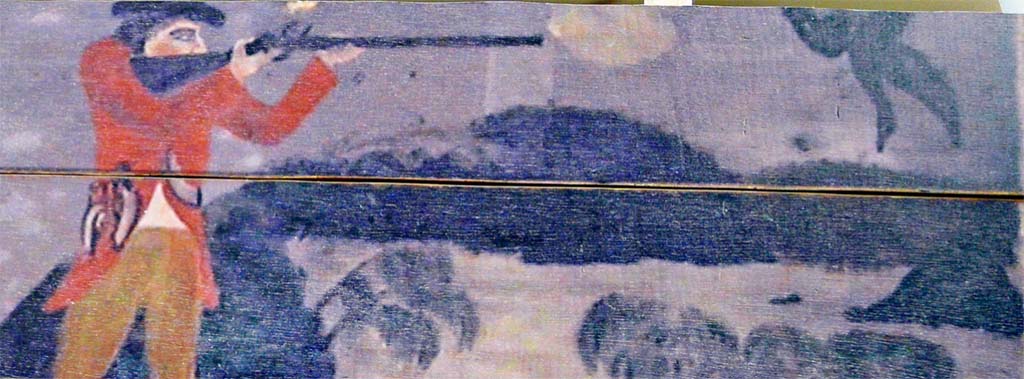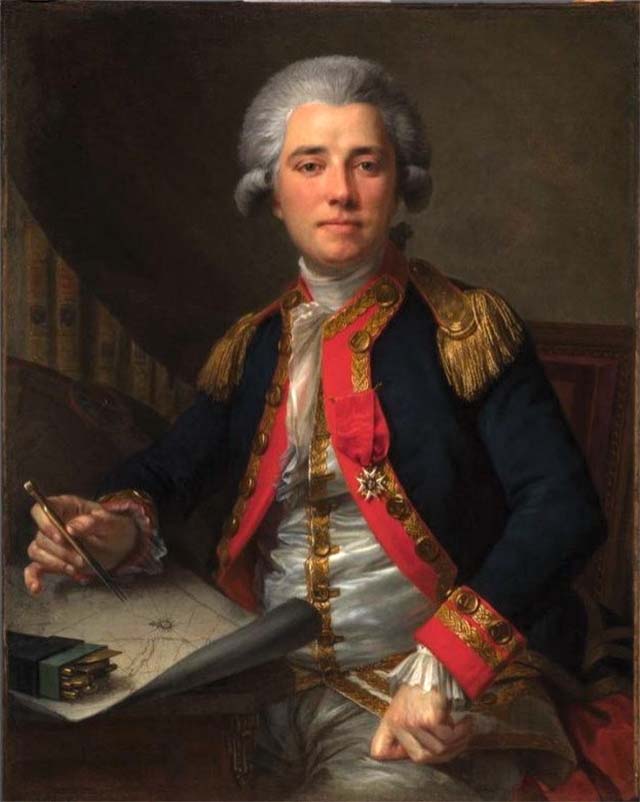
By Ray England
In 1670, King Charles II, via royal charter, granted exclusive trading rights in all territories draining into Hudson Bay, to “The Company of Gentleman Adventurers”. The resultant enterprise, to be known as the Hudson’s Bay Company, soon began establishing outposts on the shores of the Bay. At the outset, Company interest focused almost exclusively upon trade in peltry, primarily that of beaver, then in demand for the manufacture of fashionable men’s hats. But, as the Company became more familiar with the region’s resources, other opportunities for commercial enterprise were identified and pursued. The Company thus created a market for an ever-greater range of “country” products, and the indigenous peoples eagerly stepped forward to fill a role akin to “market hunter”. Over time, in addition to furs, the Company engaged in trade for salted buffalo tongues, castoreum, isinglass, whale by-products, walrus teeth, and, of particular interest here, the feathers, quills, and skins of waterfowl.
In August 1782, an oft-overlooked event, tenuously associated with the American Revolution, took place on the remote shores of the Bay. Jean François de Galoup, Compte de La Pérouse, the great French navigator/explorer, whose exploits rivalled those of Captain James Cook, sailed into the Bay in command of a small fleet of French ships of war. He laid siege to Fort Prince of Wales, the Hudson’s Bay Company’s seemingly “impregnable” Vauban-style stone fortress with its thirty- to forty-foot-thick walls. The undermanned fortress, then under the control of Samuel Hearne, was surrendered without a defensive shot having been fired from its 40 canons. Among the goods La Pérouse seized, before laying waste to the fortress, were 329 pounds of goose feathers and 17,500 goose quills. But the Company’s trade in waterfowl by-products, such as feathers and quills had begun a full century before La Pérouse’s siege. An item in the Minutes of a 24 May 1680 London meeting of Company shareholders reads: “Sr. James Hayes is desired to provide some Addicionall Instructions to Governor Nixon, to encourage the Trade of … Feathers of Fowle”. Thereafter, the Company actively traded in feathers. The Company’s eagerness to pursue this trade was reiterated in a June 17, 1693, communiqué to George Gyer, Governor of the Company’s Northern Department, “…We now recommend againe to you the sending home of what feathers you can gett such as are fitt for beds and to keep the Geese feathers apart, they being a very good commodity in England this warr time”. Despite the 1680 and 1693 shareholder communiques, Houston et al claim the Company didn’t offer feathers for sale until 1736, almost half a century after the communiques were issued. Feathers sought in trade were plucked from geese taken primarily during spring and fall waterfowl migrations in the vicinity of Company bayside trading houses. Flesh of the harvested geese was consumed fresh by Company servants, fresh or dried by the Swampy Cree “Home Guard”, who hunted for the Company, or salted down and stored it in post larders, to be drawn upon during the winter. The feathers, suitable for stuffing, were bundled for export to London where they were sold at auction to manufacturers of stuffed articles. Company ledgers covering the final decades of this trade, 1850 to 1916, recorded annual sales in excess of 6 tons of goose feathers. Although Samuel Hearne stated that a large “barren” goose (a non-breeding Canada goose), yielded a pound of fine feathers and down before molt, David Thompson estimated that on average a goose yielded only four ounces of useable feathers. Assuming Thompson’s conservative estimate is the more reliable, in peak years, upwards of 50,000 geese would have to have been taken to supply the volume of feathers sold at Company auctions. However, the feather trade tapered off rather sharply at the outset of the 20th century, before ending abruptly in 1917, no doubt due to the signing of the Migratory Birds Convention.

Beginning in 1744, goose quills were also taken in trade and exported for sale to English pen manufacturers. Council Minutes for the Northern Department of Rupertsland, May 24, 1821, attest to the Company’s interest in this commodity and its concern for proper care and handling. An item in the Minutes reads, “More care should be taken in assorting the Goose Quills than has hitherto been the case: 4 Samples are sent to you No. 1 to 4, and the Quills should be separated according to these Samples and tied up in Bundles of One hundred each.”
As late as 1822, about the time when the metal pen nib was introduced, there were according to Houston & Reeves, 27 quill pen manufacturers in London alone. Between 1850 and 1877, Company sales of goose quills to these and other manufacturers ranged from 300,000 to 500,000 per annum. Given that a goose yields ten quills suitable for pen manufacture, somewhere between 30,000 and 50,000 geese were taken each year to supply this trade alone. This estimate is in line with harvest estimates based on feather sales. Not only could quills be plucked from geese, but they could also be gathered along the shores of waters geese resorted to during molt. The appropriately named Quill Lakes in Saskatchewan was such a place. The peak year for quill sales was 1834, when the Company recorded sales of more than one million. Upwards of 100,000 geese may have been taken to yield such a quantity. Although the sale of 1 million quills may seem large, according to Charles Dickens, English manufacturers imported more than 33 million quills in 1832 to supplement their domestic supply. The metal nib, despite being an inexpensive alternative to a good quality quill was still in its infancy, and a rather crude instrument. However, Dickens, in his discourse on quill pens and steel nibs, presaged the perfection of the steel nib. He observed that, as literacy improved, it would soon be impossible to acquire sufficient quills to satisfy demand. As he had foreseen, quill sales dropped off dramatically in the early 1890s, the quill having been largely replaced by the then perfected metal nib.
The gathering of both feathers and quills was primarily the domain of indigenous women. They received the trade equivalent of one Made-Beaver (M-B) for every 10 pounds of feathers, the yield from plucking 40 geese, and one M-B for every 2,000 quills, the yield from 200 geese. To trade for one yard of fine broadcloth, which cost 5 M-B, a native woman had to pluck or gather 10,000 quills, or pluck and save feathers suitable for stuffing from 200 geese. A very hefty price for a yard of fabric. In the late 18th and early 19th century, the Company became active in the swan skin trade as well. The potential for this trade was first brought to its attention when it began to establish inland trading posts to compete more effectively with its aggressive Canadian-based rivals from Montreal. Samuel Hearne, who founded the Company’s first inland post at Cumberland House in 1774, observed that the natives there killed trumpeter swans “in such numbers that the down and quills might have been procured in considerable quantities at a trifling expense.” In 1817, the Company circulated detailed instructions for the proper preparation and handling of swan skins to ensure the valuable down was not damaged. Swan down was in demand for the manufacture of fine quality powder puffs destined for the boudoirs of Europe’s elite, and for trimming stylish garments, much like those worn by the young girls in Renoir’s painting “Madame Georges Charpentier and her children at Park.” Even an 18th century privateer once flaunted his 5 conquests decked out in swan skin finery. After his rescue from Juan Fernandez Island, where he had been marooned as a castaway for more than four years, Alexander Selkirk, the inspiration for Defoe’s “Robinson Crusoe”, participated, in cohort with the famous pirate, Dampier, in the successful capture of the richly cargoed Manilla galleon, Nuestra, Señora de la Encarnacion Disengano. Selkirk was made Master of the captured vessel and, to make his flamboyant entry into London, the refitted prize was towed up the Thames outfitted with blue damask sails, a display of gold on its deck. Selkirk himself stood proudly at the helm. He wore a swan-skin waistcoat, blue linen shirt, new breeches, and shoes with scarlet laces!
Company records for the period 1762 to 1841 recorded the sale of more than 200,000 swan skins, an average of about 2,500+ per annum. They were the skins of trumpeter swans and it was this trade, some argue, that was in large measure responsible for their near extinction. The trade in swan skins peaked in the 1820s and ‘30s, when an average of 3,000 to 3,500 were sold annually. By the closing decades of the 19th century, however, annual sales had dwindled to an average of about 140 skins. It is difficult to establish how many of the swan skins handled by the Company originated from within the present-day boundaries of Manitoba. However, we do know that in 1810 Alexander Henry the Younger, then in charge of Terre Blanche House on the nearby Saskatchewan, recorded an on-hand inventory of 208 swan skins. Regardless of origin, almost all the skins traded were assembled for export at York Factory. Sturdier than goose quills, yet flexible, swan quills were also sought in trade and a premium was paid for them. A swan quill pen was said to outlast as many as 50 made from goose quills. In its 1821 directive regarding the proper handling of swan quills, the Company instructed its servants, “The Swan Quills should not be cut as has been the Case laterally, this reduces their value more than half they should be shipped in the full length as they are pluck’d from the Swans wing.”
As can be seen from Company records of trade in the feathers, quills, and skins of waterfowl, the “fur trade era” was about a lot more than just the trade in fur.


